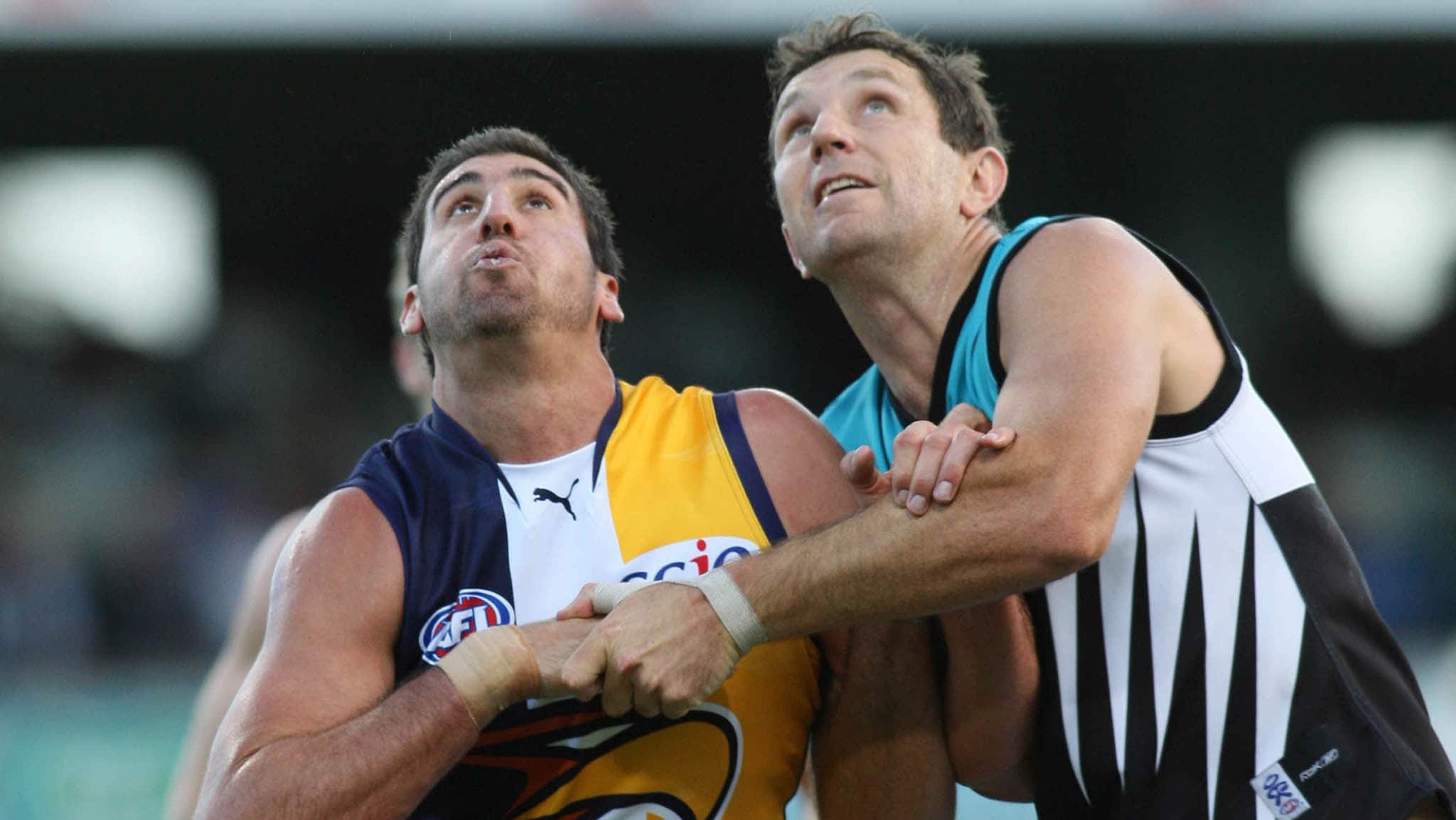NEVER before has so much been expected of your No.1 ruckman.
Extensive statistical analysis on the ruck revolution began in 2002 and several key categories peaked or troughed this past season.
The best big men now absorb 76 per cent of the ruck duties and play 83 per cent of game time.
Those figures have steeply risen from 61 and 71 per cent, respectively, a decade ago, when Dean Cox and Brendon Lade were the knights of the centre circle.
West Coast went against the grain in 2012 All Australian Nic Naitanui's knee-related absence this year, with its main ruckman spending a League-low 64 per cent of time in that role.
But the numbers explain why dual under-18 All Australian ruckman Sam Hayes, with his suspect endurance, slipped from a potential top-10 pick all the way to No.47 in this year's draft.
Richmond's Callum Coleman-Jones (No.20) and Carlton's Tom De Koning (30) – who may end up more of a forward – were taken ahead of Hayes, in part because of their superior athleticism.
AFL clubs selected more than one specialist ruckman just 57 times in the 2017 season, a startling drop from the recorded high of 267 only nine years ago.
Times have changed since Dean Cox and Brendon Lade were in their prime. Picture: AFL Photos
Interestingly, the number of ruckmen drafted has not been impacted in the past five years, hovering between nine and 11 in that period.
That could mean increased cases like Jake Spencer, Majak Daw and Dawson Simpson, none of whom has played more than 38 games despite all being AFL-listed for at least eight seasons.
Pairing the top ruckman with a pinch-hitting option is the newest fad, becoming more prevalent since Leigh Brown excelled in the back-up role in Collingwood's 2010 premiership side.
Ruck guru Darren Flanigan, who played 138 matches for Geelong from 1981 to 1992, works with some of the country's most talented ruckmen and has adapted to the role's new expectations.
"I reckon I changed (my coaching) 10 years ago, from where I'd just teach ruckwork, as in your hand on the ball, using the body – that sort of stuff," Flanigan told AFL.com.au.
"Now I talk more about the physicality of the role and the athleticism required to play the role, but also your ability to impact the game when you're not in the ruck.
"The days of the standalone ruckman who just rucks and goes to the bench are too hard to manipulate and manage these days."
There are exceptions to the rule.
Tom Hickey (98.8 per cent) and Billy Longer (98.1) – who did not play together at St Kilda in 2017 – Sean Darcy (98.1), Matt Leuenberger (97.4), Tom Bellchambers (97.2) and Sam Jacobs (97) overwhelmingly spent their game time in the ruck.
Even then, Flanigan argues their job description still demands they are more influential "on the spread" than in his playing days.
Saints Tom Hickey and Billy Longer never played in the same team this season. Picture: AFL Photos
No ruckman spent more time on the ground in any position this year than Stefan Martin (88.5 per cent), Hickey (87), Todd Goldstein (86.9) and Jarrod Witts (86.8).
What enthuses Flanigan is there is room for ruckmen to boast different strengths – and statistics support that – despite bulk rule changes making it the most "interfered part of the game".
Aaron Sandilands and Jacobs were the hit-out kings; Martin stood out in clearances and marks, Brodie Grundy in disposals and Matthew Kreuzer in contested possessions; and the physical Shane Mumford laid the most tackles.
This year's All Australian ruckman, Paddy Ryder, shone in multiple areas and his athleticism is indicative of what the modern game demands.
Rory Lobb's ground coverage and marking will provide something new for Greater Western Sydney in Mumford's retirement, but Flanigan fears he could be vulnerable against the shrewdest rivals.
"I watch ruckmen with great interest – and maybe I'm over-observant – but I think it's a great position to play," Flanigan said.
"Everyone is so different with their methodology of playing in the position, and you have to back your skills against the opposition's skills.
"You play on each other, but you can play off each other and it's almost like a game of chess … I just think they're amazing athletes."
How the role of the ruckman has evolved
YEAR | % TIME NO.1 RUCKMAN IS IN RUCK | % TIME NO.1 RUCKMAN PLAYS IN ANY POSITION | % OF TEAM'S HIT-OUTS NO.1 RUCKMAN WINS |
2017 | 76 | 83 | 81 |
2012 | 71 | 85 | 70 |
2007 | 61 | 71 | 59 |



